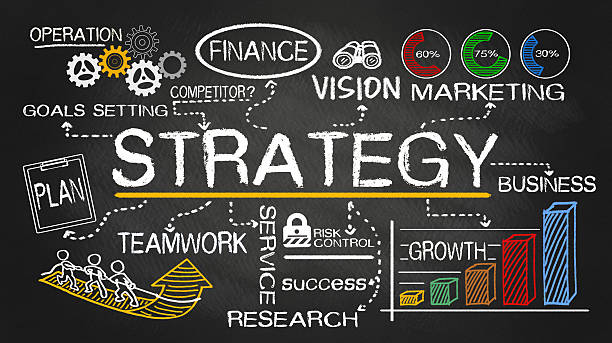




I have been giving the theme of business procedure a lot of thought recently and needed to share a couple of key thoughts that have ascended to the best. Likely you definitely know these things, yet I thought putting them down in one succinct note may be of esteem.
Toward the day’s end, it is basic to remember that all procedure and vital arranging depends on… speculating. There is no real way to know the future, yet key arranging still assumes an imperative part fit as a fiddle the future and settle on the kind of choices that will enable you to move towards your coveted results. It’s a figure about the future, yet it’s a figure that causes you make what’s to come.
FOLLOW THE LISTING …
Objective Is the objective clearly defined, and is it based on a realistic view of the marketplace?
Knowledge Is the strategy based on superior knowledge of your customer, marketplace, and competition and a realistic assessment of your own capabilities?
Initiative Does the strategy enable you to set the pace in the field and jump ahead of the competition?
Mass Are you focusing your efforts in those areas that provide the greatest opportunity?
Economy Are resources being economically and prudently deployed?
Flexibility Does the strategy enable you to shift resources easily if required?
Will the organization be able to react quickly to rapidly changing circumstances?
Unity of Leadership Is everyone working in unison to achieve a common goal?
If you ask fifteen people where the organization is heading, will you receive fifteen different responses?
Security Are plans being kept secret? Is it clear which information has to be kept secure?
Surprise Will you strike the competition when and where it’s least prepared?
Do you have enough speed and competitive intelligence to prevent competitors from following your lead?
Simplicity Is the strategy as simple as it can be?
Have you reduced any potential for misunderstanding?
Speed Can you mobilize “forces” at will?
Do bureaucracy, consensus management, undefined responsibility, and political infighting reduce your ability to move quickly?
Communication Has the strategy been made available to those who need to know?
Have individual responsibility and accountability been assigned?
Commitment Does everyone feel a part of the initiative and passionate about achieving its goals? Or do just a few people “own” the initiative?
Hopefully you as a reader, planner, strategist etc. have something to take away from this article.
Please do not forget to like/share and spread this blog further in your own network/community. Thank you so much. If you have any comments let us know.








